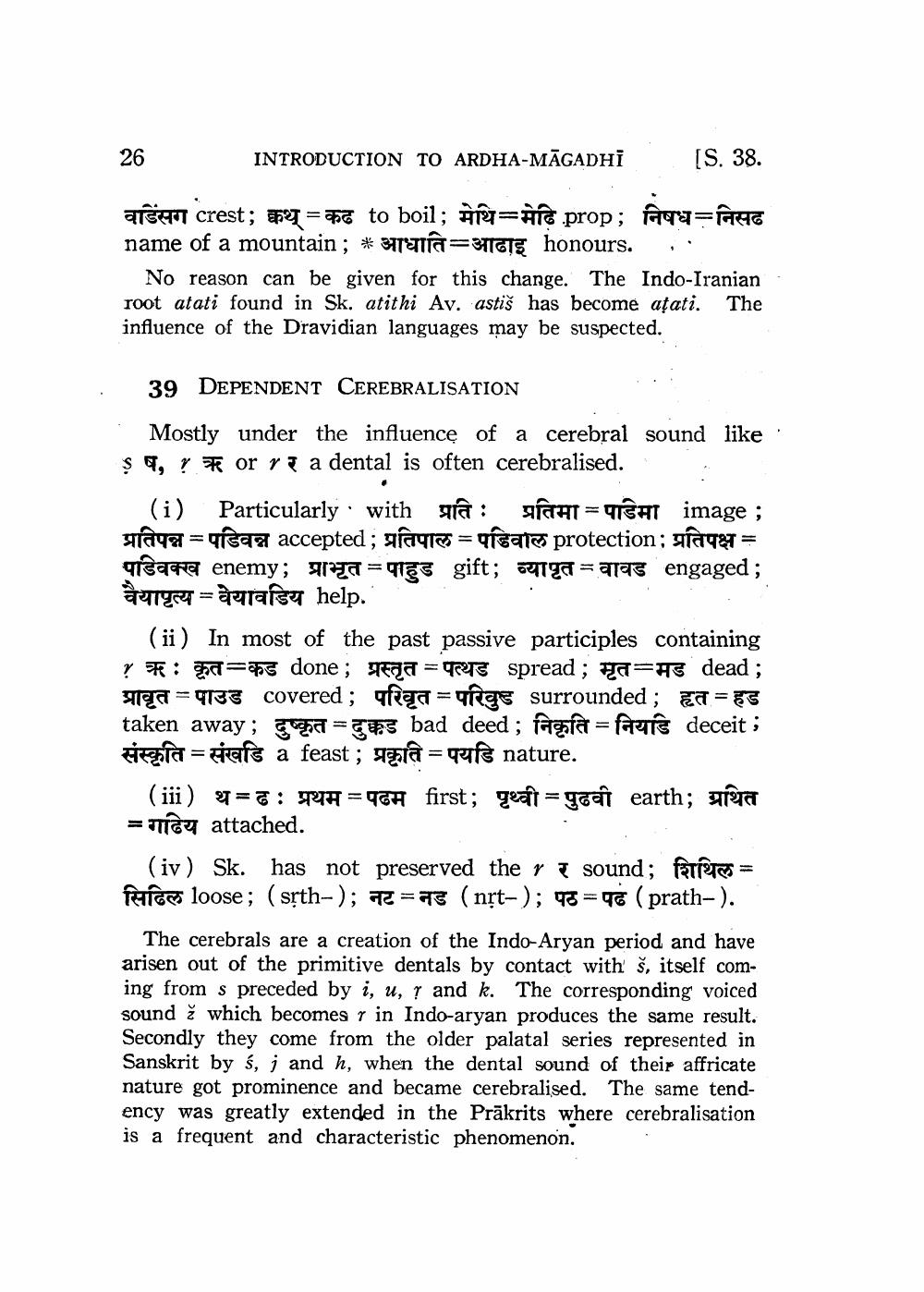________________
26
INTRODUCTION TO ARDHA-MĀGADHI
[S. 38.
वाडेंसग crest; क्वथ् = कढ to boil; मेथि-मेढि .prop; निषध-निसढ name of a mountain; * आधाति-आढाइ honours. .
No reason can be given for this change. The Indo-Iranianroot atati found in Sk. atithi Av. astis has become atati. The influence of the Dravidian languages may be suspected.
39 DEPENDENT CEREBRALISATION
Mostly under the influence of a cerebral sound like $ ष, * or r र a dental is often cerebralised.
(i) Particularly · with प्रति : प्रतिमा = पडिमा image ; प्रतिपन्न पडिवन्न accepted; प्रतिपाल = पडिवाल protection; प्रतिपक्ष = पडिवक्ख enemy; प्राभृत = पाहुड gift; व्यापृत= वावड engaged; वैयापृत्य = वेयावडिय help.
(ii) In most of the past passive participles containing ? ऋ: कृत=कड done ; प्रस्तृत = पत्थड spread ; मृत-मड dead ; प्रावृत = पाउड covered; परिवृत परिवुड surrounded ; हृत = हड taken away; दुष्कृत = दुक्कड bad deed ; निकृति = नियडि deceit; संस्कृति =संखडि a feast ; प्रकृति = पयडि nature.
(iii) थ = ढ : प्रथम = पढम first; पृथ्वी = पुढवी earth; ग्रथित = गढिय attached.
(iv) Sk. has not preserved the r र sound; शिथिल = सिढिल loose; (srth-); नट = नड (nrt-); पठ = पढ (prath-).
The cerebrals are a creation of the Indo-Aryan period and have arisen out of the primitive dentals by contact with š, itself coming from s preceded by i, u, ļ and k. The corresponding voiced sound ž which becomes r in Indo-aryan produces the same result. Secondly they come from the older palatal series represented in Sanskrit byś, j and h, when the dental sound of their affricate nature got prominence and became cerebralised. The same tendency was greatly extended in the Prākrits where cerebralisation is a frequent and characteristic phenomenon.




